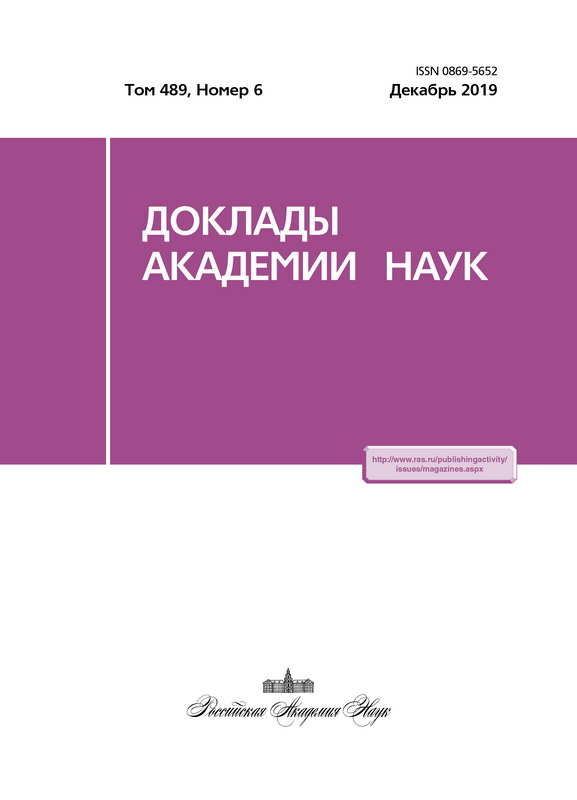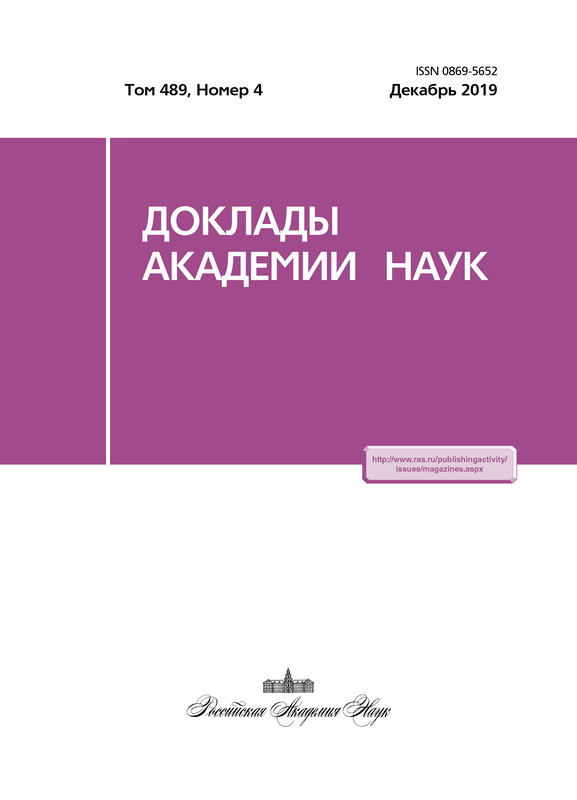Численное моделирование волновых процессов в слоистых средах с газонасыщенными включениями: сравнение двумерных и трёхмерных моделей
- Авторы: Стогний П.В.1, Хохлов Н.И.1,2, Петров И.Б.1,2
-
Учреждения:
- "Московский физико-технический институт (национальный исследовательский университет)"
- "Федеральный научный центр Научно-исследовательский институт системных исследований Российской академии наук"
- Выпуск: Том 489, № 4 (2019)
- Страницы: 351-354
- Раздел: Математическая физика
- URL: https://journals.eco-vector.com/0869-5652/article/view/18683
- DOI: https://doi.org/10.31857/S0869-56524894351-354
- ID: 18683
Цитировать
Аннотация
В настоящее время изучение Арктического региона - приоритетное направление для исследований в нашей стране в связи с расположенными там огромными запасами неизведанных месторождений нефти и газа. Большие запасы углеводородов находятся на акватории Северных морей. Осложняют разработку месторождений на акватории газовые взрывы, которые происходят в результате непреднамеренного вскрытия и дальнейшего распространения газа. В связи с невозможностью проведения частого мониторинга территории с газовыми залежами проводится численное моделирование территорий с обнаруженными газонасыщенными слоями. В данной работе представлены результаты численного моделирования распространения сейсмических волн в слоистых моделях геологических сред с газонасыщенными включениями для четырёхлетнего периода с помощью сеточно-характеристического метода. Получены волновые картины сейсмических откликов и сейсмограммы для рассматриваемой постановки задачи. Проведено сравнение полученных волновых картин и сейсмограмм для двумерного и трёхмерного случая. Результаты показали хорошее совпадение.
Ключевые слова
Об авторах
П. В. Стогний
"Московский физико-технический институт (национальный исследовательский университет)"
Автор, ответственный за переписку.
Email: stognii@phystech.edu
Россия, 141701, Московская обл., г. Долгопрудный, Институтский пер., д.9
Н. И. Хохлов
"Московский физико-технический институт (национальный исследовательский университет)"; "Федеральный научный центр Научно-исследовательский институт системных исследований Российской академии наук"
Email: k_h@inbox.ru
Россия, 141701, Московская обл., г. Долгопрудный, Институтский пер., д.9; 117218, г. Москва, Нахимовский проспект, д.36-1
И. Б. Петров
"Московский физико-технический институт (национальный исследовательский университет)"; "Федеральный научный центр Научно-исследовательский институт системных исследований Российской академии наук"
Email: petrov@miph.ru
Член-корреспондент РАН
Россия, 141701, Московская обл., г. Долгопрудный, Институтский пер., д.9; 117218, г. Москва, Нахимовский проспект, д.36-1Список литературы
- Goodway W., Enachescu M. Introduction to this Special Section: Arctic/ATC. The Leading Edge. 2013. V. 32. № 5. P. 522-523.
- Фаворская А.В., Петров И.Б. и др. Численное моделирование волновых процессов в слоистых средах в условиях Арктики // Матем. моделирование. 2015. Т. 27. № 11. С. 63-75.
- Петров И.Б. Вычислительные проблемы моделирования природных и индустриальных процессов в Арктической зоне Российской Федерации // Чебышевский сб. 2017. Т. 18. № 3. С. 428-443.
- Богоявленский В.И., Керимов В.Ю., Ольховская О.О. и др. Повышение эффективности и безопасности поисков, разведки и разработки месторождений нефти и газа на акватории Охотского моря // Территория “НЕФТЕГАЗ”. 2016. № 10. С. 24-32.
- Новацкий В. Теория упругости. М.: Мир, 1975. 872 с.
- Muratov M., Petrov I., Leviant V. Grid-Characteristic Method as Optimal Tool of Fracture Formations Research. Saint Petersburg 2018: Innovations in Geosciences, 2018. doi: 10.3997/2214-4609.201800290.
- Магомедов К.М., Холодов А.С. Сеточно-характеристические численные методы. М.: Наука, 1988. 288 с.
- Khokhlov N.I., Golubev V.I. On the Class of Compact Grid-Characteristic Schemes // Smart Innovation, Systems and Technologies. 2019. V. 133. P. 64-77. doi: 10.1007/978-3-030-06228-6_7.
- Petrov I., Favorskaya A., Favorskaya M., et al. Development and Applications of Computational Methods // Smart Innovation, Systems and Technologies. 2019. V. 133. P. 3-7. doi: 10.1007/978-3-030-06228- 6_1.
Дополнительные файлы







